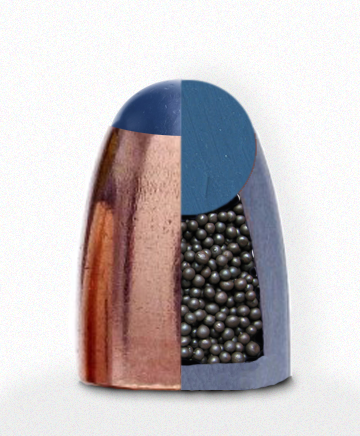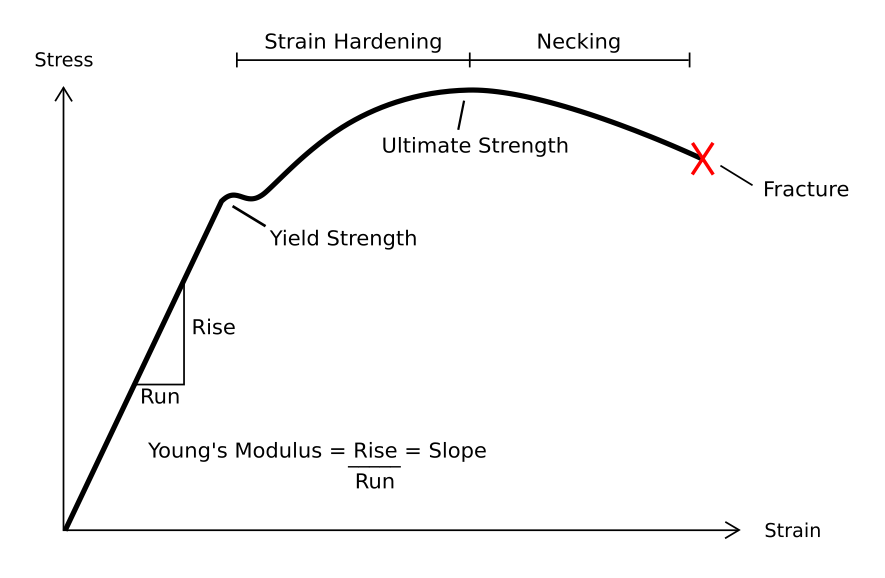|
Frangible
A material is said to be frangible if through deformation it tends to break up into fragments, rather than deforming elastically and retaining its cohesion as a single object. Common crackers are examples of frangible materials, while fresh bread, which deforms plastically, is ''not'' frangible. A structure is frangible if it breaks, distorts, or yields on impact so as to present a minimum hazard. A frangible structure is usually designed to be of minimum mass. Light poles A frangible light pole base is designed to break away when a vehicle strikes it. This lessens the risk of injury to occupants of the vehicle. Airport structures Following a serious incident where an aircraft hit a donut lighting structure at San Francisco International airport, the Federal Aviation Administration (FAA) instigated frangible design rules for such structures. A frangible object was defined as "an object of low mass, designed to break, distort or yield on impact, so as to present the minimum ... [...More Info...] [...Related Items...] OR: [Wikipedia] [Google] [Baidu] |
Frangible Bullet
Frangible bullets are intended to disintegrate into tiny particles upon target impact to minimize their penetration of other objects. Small particles are slowed more rapidly by air resistance, and are less likely to cause injury or damage to persons and objects distant from the point of bullet impact. Most frangible bullets are subject to brittle failure upon striking a hard target. This mechanism has been used to minimize the tendency of malleable lead and copper bullets to ricochet from hard targets as large, cohesive particles. Brittle failure may occur at subsonic velocity. Attempting to crimp a brittle frangible bullet into the cartridge case may break the bullet. Brittle frangible bullets may break during the self-loading cycle of semi-automatic firearms; and those fired from revolvers often break as the bullet encounters the barrel forcing cone after leaving the cylinder. Manufacturing Powder metallurgy techniques fabricate bullets from mixtures of powdered metals ... [...More Info...] [...Related Items...] OR: [Wikipedia] [Google] [Baidu] |
Frangible Bullet Stress Test
A material is said to be frangible if through deformation (engineering), deformation it tends to break up into fragments, rather than deforming elastically and retaining its cohesion as a single object. Common cracker (food), crackers are examples of frangible materials, while fresh bread, which deforms plastically, is ''not'' frangible. A structure is frangible if it breaks, distorts, or yields on impact so as to present a minimum hazard. A frangible structure is usually designed to be of minimum mass. Light poles A frangible light pole base is designed to break away when a vehicle strikes it. This lessens the risk of injury to occupants of the vehicle. Airport structures Following a Pan Am Flight 845, serious incident where an aircraft hit a donut lighting structure at San Francisco International airport, the Federal Aviation Administration, Federal Aviation Administration (FAA) instigated frangible design rules for such structures. A frangible object was defined as "an obje ... [...More Info...] [...Related Items...] OR: [Wikipedia] [Google] [Baidu] |
Glaser Safety Slug
Glaser Safety Slug is a frangible bullet made by Cor-Bon/Glaser, a subsidiary of Dakota Ammo, an American ammunition company formerly based in Sturgis, South Dakota. The Glaser Safety Slug was developed by Jack Canon in 1975, the same year the company was founded by Armin Glaser. History The original round was a hand-made hollow-point bullet filled with No. 12 birdshot () with a flat polymer cap. To improve ballistic performance, a polymer-tipped round ball was introduced in 1987, and the current compressed core form was first sold in 1988. The formulation of the polymer was also changed in 1994 to improve fragmentation reliability. Performance The company produces bullets in calibers from .25 to .45 for pistols and from .223 to .30-06 for rifles. Each caliber comes in two forms, "blue" and "silver", the latter having greater penetrating power due to the use of no. 6 birdshot rather than no. 12. The projectile in the cartridge is of a lighter weight than more conventiona ... [...More Info...] [...Related Items...] OR: [Wikipedia] [Google] [Baidu] |
Ricochet
A ricochet ( ; ) is a rebound, bounce, or skip off a surface, particularly in the case of a projectile. Most ricochets are caused by accident and while the force of the deflection decelerates the projectile, it can still be energetic and almost as dangerous as before the deflection. The possibility of ricochet is one of the reasons for the common firearms safety rule "Never shoot a bullet at a flat, hard surface." Ricochets can occur with ''any'' caliber, but short or round ricocheting bullets may not produce the audible whine caused by tumbling irregular shapes. Ricochets are a hazard of shooting because, for as long as they retain sufficient velocity, ricocheting bullets or bullet fragments may cause collateral damage to animals, objects, or even the person who fired the shot. Variables Ricochets occur when a bullet or bullet fragment is deflected by an object rather than penetrating and becoming embedded in that object. Ricochet behavior may vary with bullet shape, bullet ma ... [...More Info...] [...Related Items...] OR: [Wikipedia] [Google] [Baidu] |
Spall
Spall are fragments of a material that are broken off a larger solid body. It can be produced by a variety of mechanisms, including as a result of projectile impact, corrosion, weathering, cavitation, or excessive rolling pressure (as in a ball bearing). Spalling and spallation both describe the process of surface failure in which spall is shed. The terms ''spall'', ''spalling'', and ''spallation'' have been adopted by particle physicists; in neutron scattering instruments, neutrons are generated by bombarding a uranium (or other) target with a stream of atoms. The neutrons that are ejected from the target are known as "spall". Mechanical spalling Mechanical spalling occurs at high-stress contact points, for example, in a ball bearing. Spalling occurs in preference to brinelling, where the maximal shear stress occurs not at the surface, but just below, shearing the spall off. One of the simplest forms of mechanical spalling is plate impact, in which two waves of com ... [...More Info...] [...Related Items...] OR: [Wikipedia] [Google] [Baidu] |
Sacrificial Part
A sacrificial part is a part of a machine or product that is intentionally engineered to fail under excess mechanical stress, electrical stress, or other unexpected and dangerous situations. The sacrificial part is engineered to fail first, thus breaking the serial connection and protecting other parts of the system downstream. Examples Examples of sacrificial parts include: * Electrical fuses * Over-pressure burst disks * Mechanical shear pins * Galvanic anodes * Pyrotechnic fastener * Fusible plug * Some leader lines used in angling Angling (from Old English ''angol'', meaning "hook") is a fishing technique that uses a fish hook attached to a fishing line to tether individual fish in the mouth. The fishing line is usually manipulated with a fishing rod, although rodless te ... See also * * * Mechanical engineering Safety equipment References {{Tech-stub ... [...More Info...] [...Related Items...] OR: [Wikipedia] [Google] [Baidu] |
Friability
In materials science, friability ( ), the condition of being friable, describes the tendency of a solid substance to break into smaller pieces under stress or contact, especially by rubbing. The opposite of friable is indurate. Substances that are designated hazardous, such as asbestos or crystalline silica, are often said to be friable if small particles are easily dislodged and become airborne, and hence respirable (able to enter human lungs), thereby posing a health hazard. Tougher substances, such as concrete, may also be mechanically ground down and reduced to finely divided mineral dust. However, such substances are not generally considered friable because of the degree of difficulty involved in breaking the substance's chemical bonds through mechanical means. Some substances, such as polyurethane foams, show an increase in friability with exposure to ultraviolet radiation, as in sunlight. Friable is sometimes used metaphorically to describe "brittle" personalities wh ... [...More Info...] [...Related Items...] OR: [Wikipedia] [Google] [Baidu] |
Horse Jumping Obstacles
Many types of obstacles are found in competitive jumping (horse), horse jumping sports such as show jumping, show hunter, hunter classes, and the Cross-country riding, cross-country phase of eventing. The size and type of obstacles vary depending on the course designer and the expected difficulty level of a particular competition. Horses will need to negotiate many types of obstacles in order to be successful in jumping sports. Fences used in show jumping are often brightly colored and artistically designed, while hunter and eventing fences are generally made to look rustic and natural. Show jumping and hunter obstacles are constructed to fall down if struck by the horse, whereas eventing obstacles have traditionally been solidly built—though to prevent dangerous rotational falls, certain elements are now being designed to break away when hit. Arrowhead Also called chevrons, these fences are shaped like triangles, with the point facing towards the ground. They are generally ver ... [...More Info...] [...Related Items...] OR: [Wikipedia] [Google] [Baidu] |
Security Tape
Security tape (or security label) is a type of adhesive tape used to help reduce shipping losses due to pilfering and theft. It helps reduce tampering or product adulteration. It is often a pressure-sensitive tape or label with special tamper-resistant or tamper-evident features. It can be used as a ''security seal'' in addition to a container closure or can be used as a security label. They are sometimes used as or with authentication products and as an anti-pilferage seal. Security tapes and labels are sometimes used in conjunction with security envelopes. Use Security tapes can be used as packaging tapes on small primary packages such as bottles and cartons or on larger shipping containers such as corrugated boxes. They are also used on unit loads or palletized goods. The strength and adhesive bonding are important. Security labels are usually only used for their security features; backing strength is less important but the bonding characteristics are critical. So ... [...More Info...] [...Related Items...] OR: [Wikipedia] [Google] [Baidu] |
Tempered Glass
Tempered or toughened glass is a type of safety glass processed by controlled heat treatment, thermal or chemical treatments to increase its strength compared with normal glass. Tempering puts the outer surfaces into Compression (physics), compression and the interior into Tension (physics), tension. Such stresses cause the glass, when broken, to shatter into small granular chunks instead of splintering into large jagged shards as ordinary annealing (glass), annealed glass does. These smaller, granular chunks are less likely to cause deep penetration when forced into the surface of an object (e.g. by gravity, by wind, by falling onto them, etc.) compared to larger, jagged shards because the reduction in both the mass and the maximum dimension of a glass fragment corresponds with a reduction in both the momentum and the penetration depth of the glass fragment. Tempered glass is used for its safety and strength in a variety of applications, including passenger vehicle windows (ap ... [...More Info...] [...Related Items...] OR: [Wikipedia] [Google] [Baidu] |
GlobalSecurity
GlobalSecurity.org is an American independent, nonpartisan, nonprofit organization that serves as a think tank, and research and consultancy group. Focus The site is focused on national and international security issues; military analysis, systems, and strategies; intelligence matters; and space policy. History It was founded in December 2000 by John Pike, who had worked since 1983 with the Federation of American Scientists, where he directed the space policy, cyberstrategy, military analysis, nuclear resource, and intelligence resource projects. GlobalSecurity.org is headquartered in the Washington, D.C. metropolitan area in Alexandria, Virginia, and Pike remains as its director. The website's target audience includes journalists, policy-makers, scholars, political scientists, military and defense personnel, and the public. It supplies background information and developing news stories, providing online analysis and articles that analyze what are sometimes little-discusse ... [...More Info...] [...Related Items...] OR: [Wikipedia] [Google] [Baidu] |
Deformation (engineering)
In engineering, deformation (the change in size or shape of an object) may be ''elastic'' or ''plastic''. If the deformation is negligible, the object is said to be ''rigid''. Main concepts Occurrence of deformation in engineering applications is based on the following background concepts: * ''Displacements'' are any change in position of a point on the object, including whole-body translations and rotations ( rigid transformations). * ''Deformation'' are changes in the relative position between internals points on the object, excluding rigid transformations, causing the body to change shape or size. * ''Strain'' is the ''relative'' ''internal'' deformation, the dimensionless change in shape of an infinitesimal cube of material relative to a reference configuration. Mechanical strains are caused by mechanical stress, ''see stress-strain curve''. The relationship between stress and strain is generally linear and reversible up until the yield point and the deformation is ... [...More Info...] [...Related Items...] OR: [Wikipedia] [Google] [Baidu] |





